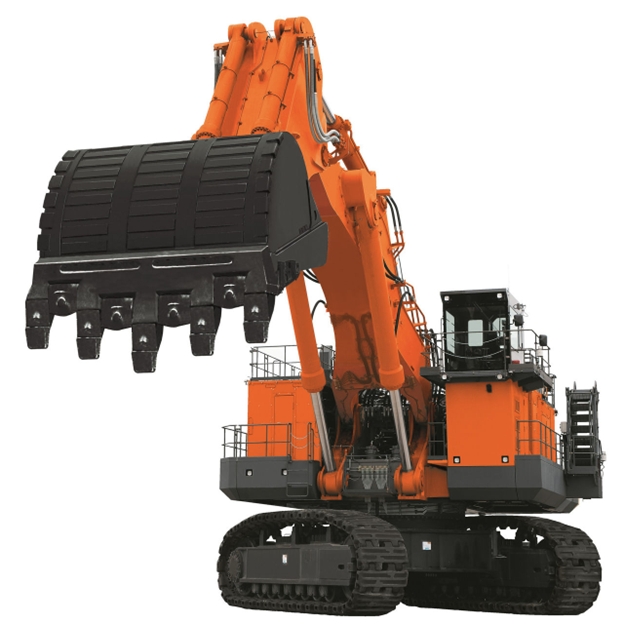Hitachi said it is developing an enhanced boom and arm for its ultra-large hydraulic excavator range with boosted durability that can extend service life*1 by 1.5 times previous models, and is now testing its durability at a Rio Tinto site in Australia.
The OEM recently said that it has improved durability by expanding the applicability of steel castings to the boom and arm connecting part and is applicable to backhoe front excavators. Serviceability has also been improved by equipping the boom with an access hole*2 that can be opened and closed with a bolt for easier inspection.
Welding strength and part of the thickness of the boom and arm have also been reinforced. As a result, customers will enjoy reduced repair downtime of their mining equipment and lower maintenance costs too.
The newly designed boom and arm will be applied as standard equipment to the EX5600-7 backhoe excavator (operating weight of 550 tons) from March 2025, before being gradually expanded to other applicable excavator models.
Durability tests will be carried out from August 2023, prior to standard application, under actual operation loads at Brockman 4 iron ore mine in the Pilbara region of Western Australia, Australia, operated by mining giant Rio Tinto.
As part of the verification tests to be performed in collaboration with Rio Tinto, the accumulated load on the ultra-large hydraulic excavator’s boom and arm will be monitored using Load Index, one of the functions of ConSite Mine, Hitachi’s mining service solution. In addition, daily visual inspections and ultrasonic measurements will be taken periodically to detect any possible internal damage.
Using knowledge acquired through collaboration with customers such as Rio Tinto, the Hitachi Construction Machinery Group is aiming for 1.5 times longer service life of ultra-large hydraulic excavators by strengthening the service system for mining equipment and improving remanufacturing technology, thereby contributing to realization of the circular economy*3.
Many of Hitachi’s major mining customers intend to gradually pursue decarbonization through diverse options, with the aim of achieving net zero emissions by 2050. More than 400 tons*4 of CO2 is generated each time an ultra-large hydraulic excavator is scrapped, so extending the service life of the machines is an urgent issue for achieving carbon neutrality.
The Hitachi Construction Machinery Group is ramping up efforts to realize a circular economy. CO2 emissions in its parts remanufacturing businesses around the world, especially in Japan, Australia and Africa, have been greatly reduced, compared to production and use of new parts, by aggressively promoting the remanufacture and reuse of used parts such as hydraulic equipment and cylinders. But the difficulty of remanufacturing the booms and arms of ultra-large hydraulic excavators and the need to repair cracks when they have materialized, caused a bottleneck in reducing CO2 emissions and extending the service life of the machines. As durability has now been improved through the expansion of applicability of steel castings to the boom and arm connecting part, the bottleneck has been eliminated. As the weight of the boom and arm is the same as on existing ultra-large hydraulic excavators, operating performance remains unchanged.
Going forward, Hitachi Construction Machinery will expand its value chain business other than through new machinery sales, such as parts and services, rentals, used equipment, and parts and body remanufacturing. As well as solving customer issues through value chain business, Hitachi said it will reduce the amount of waste and CO2 emissions from the scrapping of machines and contribute to the realization of the circular economy.
Notes:
*1: Comparison of lifespan of boom and arm on conventional ultra-large hydraulic excavators and lifespan of boom and arm with reinforced durability. Not the same as standard warranty duration.
*2: Patent pending
*3 Circular economy: Not just a reuse economy aimed at recycling of resources and environmental conservation, but a social system with economic developability.
*4: Calculated as average amount of steel material per Hitachi Construction Machinery ultra-large hydraulic excavator with operating weight of 120t-800t × CO2 emissions of 1.8t per 1t steel
Source: Hitachi Construction Machinery

